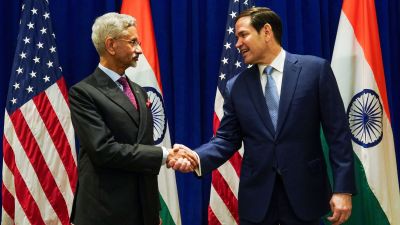Emperor Asoka’s test
The Kalinga war, which took a heavy toll on human life, left Emperor Asoka dejected. He found solace in Buddhism. His capital, Pataliputra, ...

The Kalinga war, which took a heavy toll on human life, left Emperor Asoka dejected. He found solace in Buddhism. His capital, Pataliputra, became a centre for activities related to Buddhism. Tradition says that 60,000 monks lived there. They were revered and well looked after. To enjoy these privileges, many unscrupulous elements infiltrated the ranks of the sangha.
By this time the two Buddhist councils had already met but the preachings of Lord Buddha were yet to be recorded. They had been handed down orally from one generation of monks to the next and this led to a dispute over the authenticity of the memorised teachings. At last the king decided to intervene. He deputed one of his trusted ministers, to restore order.
The minister did his best but failed. Even the threat of being arrested and incurring the king’s wrath could not deter the monks from indulging in unbecoming behaviour. The royal appointee in rage ordered the troops accompanying him to behead the recalcitrant monks. Many were slain. Seeing this the king’s younger brother, a devout and disciplined monk, challenged the minister to kill him before the others left fell victim to his madness. The minister gave up and reported the entire episode to the emperor.
Asoka was aghast at the news of monks being killed at the hands of a royal appointee. With a heavy heart he rushed to the monastery and pleaded his innocence. But many believed that he was the one responsible for the murder of the monks and his brother too pointed an accusing finger at him. The visibly upset king immediately summoned his advisory council and, after long deliberations, it was decided to recall the seniormost monk, Tissa Moggaliputta, to adjudicate on the matter.
The emissary was sent to Mount Ahogang, where the monk was living in self-imposed exile. He sensed a chance now to reorganise the sangha. The next morning, the king sought his audience and requested him to give his judgement on whether he, could be held responsible of the murder of the monks. The monk answered,‘‘King your intentions were not malicious and your act cannot be termed as sin.”
The king lost no time in inviting all the learned scholars of the order. Tradition says that Tissa Moggaliputta handpicked 1,000 Buddhist scholars who drafted the Buddhist canons in the final form of the Tripitaka. This august gathering has gone down in the annals of Buddhism as the Third Buddhist Council, under the patronage of King Asoka. We can conclude from this episode that the just and real king is one who does not hesitate in initiating action against himself.
Photos


- 01
- 02
- 03
- 04
- 05





























